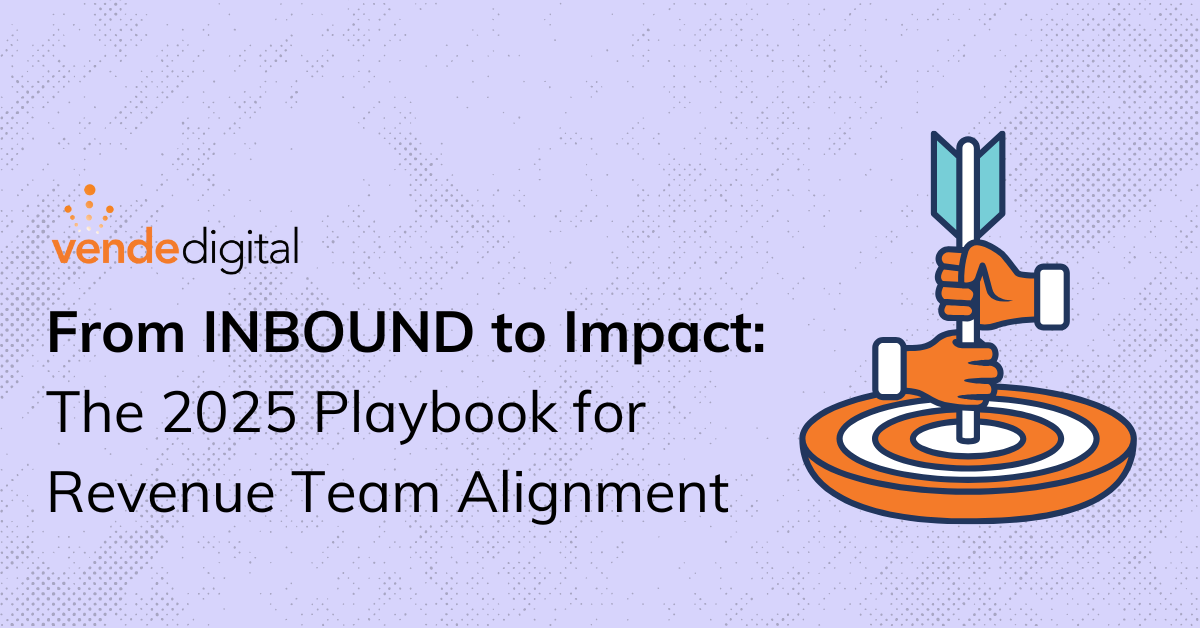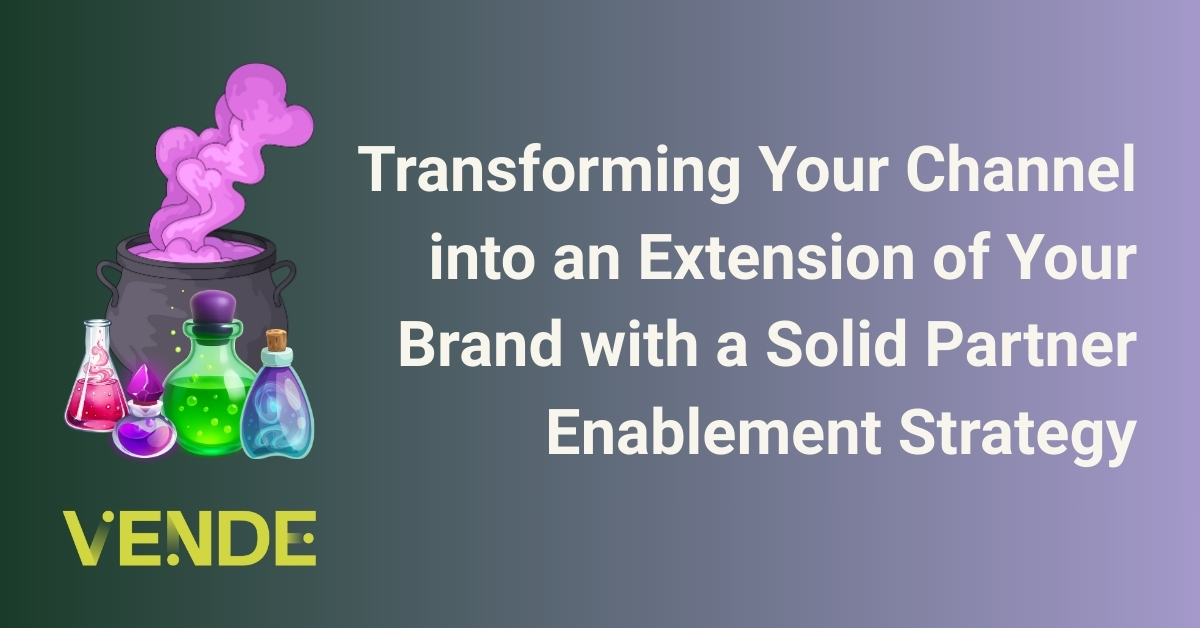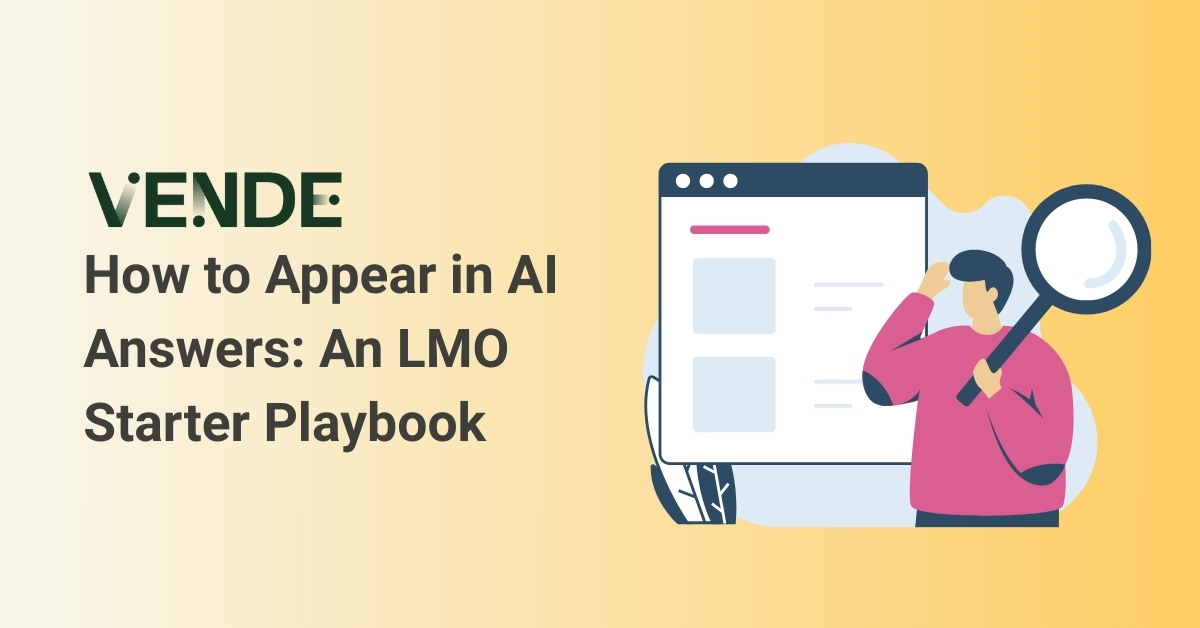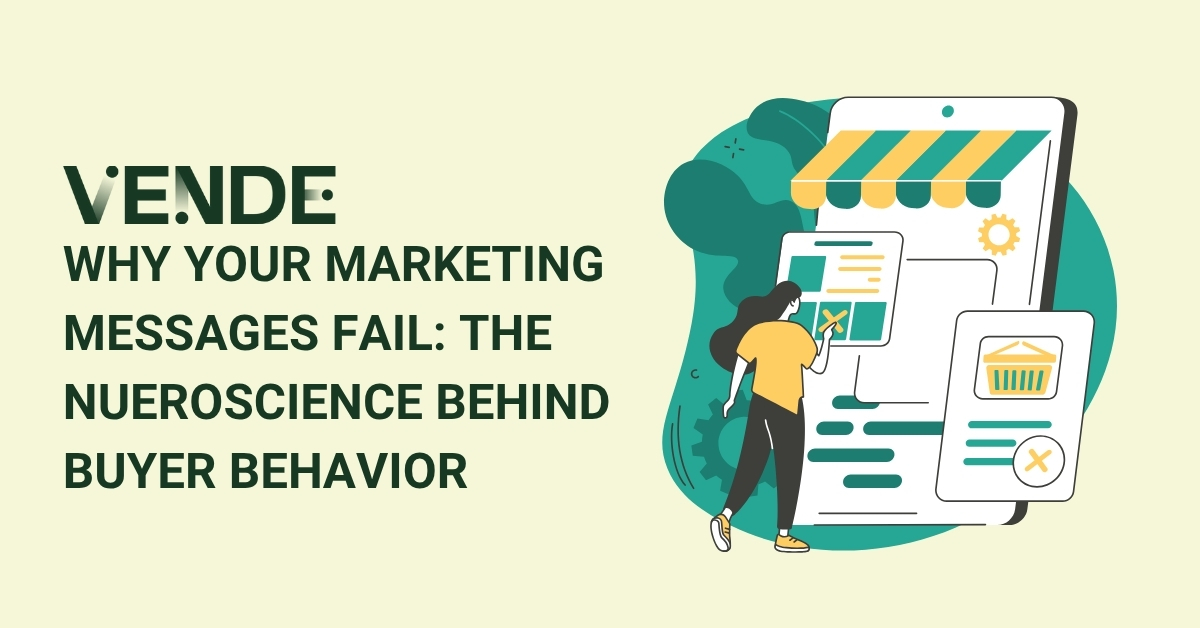
From INBOUND to Impact: The 2025 Playbook for Revenue Team Alignment
The B2B buyer journey is a complex, winding path. Buyers bounce between stages, consult multiple sources, and weigh countless options before they make a decision. Today’s buyers require over 2,000 impressions and 200 touchpoints before committing (HockeyStack). No wonder it feels like an uphill battle to keep your revenue team (Marketing, Sales, Customer Success, and RevOps) aligned.
But alignment isn’t just a nice-to-have—it’s essential. When every team works together, you build a seamless experience that guides buyers from curiosity to conversion.
In a recent Demand Gen Jam Session, From INBOUND to Impact, we brought in the FranFund team to dive deep into the practical side of revenue team alignment and share their top insights from HubSpot’s INBOUND 24. You can watch the full replay here.
This article distills those insights into a practical framework for synchronizing your Revenue Team at every buyer journey stage.
Build a Successful Revenue Team to Create Demand
B2B buyers spend 87% of their journey without seller involvement (Gartner). They’re on a self-guided tour, researching independently. The entire Revenue Team needs to support them throughout their self-guided process. Yet, many teams still work in silos, creating gaps that lead to missed opportunities for engagement and, ultimately, lost business.
To win, we need to become the go-to resource for our buyers—not just push them through a funnel. Winning mindshare is the first step to winning market share.
How to Map Revenue Teams to the Buyer’s Journey
In B2B, you’re not selling to logos—you’re selling to people with unique priorities and goals within a buying committee. A CFO might care about ROI and cost reduction, while a CTO focuses on scalability. To win in 2025, you’ll need to understand these nuances and how each part of your revenue team will engage the buying committee.
Start by answering three key questions:
- Buying Triggers: What challenges or opportunities prompt your buyers to seek solutions? Triggers could include growth, financial pressure, or outdated technology.
- Evaluation Process: How do your buyers research and compare vendors? Map the content they need at each stage and who influences these decisions.
- Key Stakeholders: Who champions, who decides, who uses, and who blocks? Identify personas and map needs, objections, and preferred content formats for each role.
Sales and Marketing Alignment Isn’t Enough
Successful mapping requires ongoing collaboration between Sales and Marketing teams along with RevOps and Customer Success. Schedule quarterly check-ins to share new insights about buyer priorities and keep journey maps current. The most valuable intelligence often comes from customer interviews, win-loss analysis, and customer success stories.
Download Our B2B Customer Journey Mapping Template

Equip your Revenue Team with our B2B Customer Journey Mapping Template to outline each stage of your buyer’s journey. This template helps you understand what matters most to your buyers at every step, identify key decision points, and match content to their needs. Get your copy here.
Strategies for Aligning Revenue Teams & Boosting Buyer Engagement in 2025
Now that you understand the various buyer personas and their journeys, you can leverage our demand gen framework and break down the process into four key pillars. We use this same framework with our clients, and it can help your team build a plan to meet buyers where they are and deliver value at every touchpoint.
Planning Phase: Set the Foundation
This is where your Revenue Team collaborates on goals, Key Performance Indicators (KPIs), audience insights, and core messages to guide all interactions, ensuring alignment from the outset.
- Marketing leads efforts in developing ICP profiles and identifying target segments.
- Sales provides on-the-ground insights into customer pain points and real-time market dynamics.
- Customer Success offers a perspective on retention drivers, helping the team understand what keeps current customers engaged.
- RevOps ensures data consistency across platforms, enabling every team to work from a unified understanding of customer needs.
Goals & Objectives - Aligning all teams with clear, measurable goals linked to revenue metrics builds a strong foundation for a buyer-centric approach. Teams can collaborate effectively towards a common goal by aligning shared objectives with pipeline and revenue rather than departmental goals like MQLs.This approach focuses all efforts on driving revenue and fulfilling customer needs.
Audience and ICP Definition - Define your Ideal Customer Profile (ICP) and target segments through cross-team collaboration to focus on prospects with the highest potential to convert. Use real-time ICP refinement tools like HubSpot Breeze Intelligence with live intent signals to keep your team agile and aligned with the market’s pulse.
Message Consistency - Your core messaging should be consistent across all departments and channels, clearly conveying your unique value proposition to your target market. A cohesive narrative addressing buyers' challenges and goals builds trust and reinforces your brand's credibility. Evolve your messaging using social media and community interactions to guide improvements, aligning your message with what resonates most.
AI as a Planning Tool - Don’t overlook the power of AI in your planning phase. AI agents can streamline workflow management and aid in content creation, optimizing time and resources. This allows your team to focus on strategic initiatives while maintaining efficiency in planning and execution.
Unified Data - The typical B2B company relies on over 14 tools to manage the customer lifecycle, presenting numerous challenges for revenue teams. To overcome this, we need a unified version of the truth from clean, integrated data shared seamlessly across Sales and Marketing teams, and also RevOps and Customer Success teams. As Paige O'Brian, CRM Specialist at FranFund, noted, "AI is only as good as the data you feed it. A unified and clean data set is crucial—not just for marketing campaigns but also for optimizing your entire go-to-market strategy."
Focus on First-Party Data - With third-party cookies going away, it's time to amp up your first-party data game. Create engaging interactive content, build vibrant communities, and host killer events to encourage prospects to throw off signals that show you where they are in their journey. This respects privacy and puts you in the driver's seat for building an opt-in list for laser-targeted marketing.
Pro Tip: Build your messaging around 3-5 core content pillars that answer one key question: “What do we want to be known for?” Revisit these pillars regularly. As your product, market, or buyer priorities evolve, ensure your ICP and messaging guide reflect those changes, keeping your strategy fresh and aligned with business goals.
Activate Your Audience: Capture Initial Interest
In the activation phase, you’re reaching out to your audience in channels where they spend time learning and networking. Every team plays a role in driving engagement and capturing early interest.
- Marketing builds awareness through targeted ads, social media, and influencer partnerships.
- Sales follows up on engaged leads, using insights from Marketing to personalize outreach.
- Customer Success supplies testimonials and case studies to bolster early-stage content.
- RevOps manages segmentation and tracking, helping each team deliver the right messages to the right people.
Search (SEO & PPC) - With zero-click searches rising, diversify beyond traditional SEO. Focus on Language Model Optimization (LMO) to establish your brand as an authoritative source for AI-driven recommendations. Emphasize featured snippets and direct answers to keep your brand visible, even when users don’t click. If you've followed Google's EEAT guidelines, you're already ahead since AI language models are also looking for authoritative content.
Social Media Engagement—The “spray and pray” approach no longer works. Instead, tailor content to each platform’s unique audience. As Gaby Holub from FranFund emphasized during our Jam Session, identical content yields different results on each platform—knowing your audience’s preferences is key.
Paid social is an effective content distribution tool, mainly when run as always-on awareness campaigns. Start with content that answers, “What do you want your audience to know?” and follow up with content that answers, “What do you want them to do next?”—a strategy that drives 3x more buying committee engagement than standard posting.
To stay ahead in 2025, diversify with multimedia content like lo-fi videos, interactive posts, and snackable content to keep up with shifting user preferences.
Influencer Partnerships—Partner with industry experts to extend your reach and boost credibility. Appearances on relevant podcasts, co-created content, and user-generated testimonials build trust and provide Sales and Marketing teams with fresh material to share with prospects.
Employee Advocacy—To extend your reach, support employees in building their personal brands, particularly on LinkedIn. A well-supported team can help you reach new audiences and reinforce community trust.
Emerging Channels- Explore new channels like Connected TV (CTV) to reach audiences who aren’t actively searching but may be interested in learning about your offerings. CTV builds brand awareness and introduces your brand to untapped audiences.
Pro Tip: Use tools like HubSpot to schedule social posts and measure their performance. This data can guide future campaigns, revealing which formats resonate most with your audience.
Establish Authority: Build Trust Through Content
If activating your audience is like mingling at a cocktail party, establishing authority is when you invite those new connections to your home—your website. At this stage, your goal is to position your brand as a trusted advisor, coordinating efforts across teams to create content that meets buyer needs and builds trust.
- Marketing creates content hubs, whitepapers, and comparison guides that showcase expertise and address buyer challenges.
- Sales Team uses these assets in outreach, equipping prospects with the insights they need to make informed choices.
- Customer Success shares real customer pain points, helping Marketing craft content that solves actual buyer challenges.
- RevOps tracks content performance metrics to reveal which resources drive engagement and where optimization is needed.
Ben Rookey, Marketing Director at FranFund, says, "Our website should act not as a digital brochure but as a buyer enablement tool, proving our capability to address their needs."
Websites should remove friction, optimize the user experience, and offer valuable resources such as comparison charts, ROI calculators, and detailed FAQs.
Strategic & Valuable CTAs - Your website's job is to sell conversions, not make sales. Use strategic calls to action to guide users to deeper content, encourage downloads, or schedule demos. Replace generic CTAs with specific, value-focused prompts. For example, instead of “Contact Us,” use “See How Our Solution Works” to give buyers a clear next step. Consider implementing a Next Step Plan:
- Primary Call to Action: Invite buyers to explore deeper.
- Outline Your Solution: Show how you’ll address their issue.
- Paint the Outcome: Describe the results they can expect
Here is an example of the Next Step Plan on our website.
Content Strategy—Most B2B content fails because it prioritizes SEO keywords over helping buyers learn. Focus on creating material that helps internal champions advocate for your solution. Authoritative data and original research position your brand as a thought leader. For fresh insights.
Check out our past Demand Gen Jam Sessions for a deep dive into building an effective content strategy:
- Part 1: How to Develop a Winning B2B Content Strategy
- Part 2: Content Marketing Tips for B2B Marketers
Content Hubs - Create centralized content hubs that organize resources by topic or persona. These hubs help buyers quickly find related materials and self-educate.
AI-Driven Personalization—Enhance the user experience with AI-driven personalization that tailors content based on industry, past interactions, or buyer journey stage. This isn’t just adding names to emails; it’s about delivering relevant content in real time, which makes visitors feel understood.
Community and Social Proof - Build trust with social proof using case studies, reviews, and testimonials that showcase your expertise. To strengthen your brand's authority, foster a community offering value, like professional development and peer support. Keep this community a “sales-free” zone to encourage genuine interaction and relationships.
If you're looking for a community of like-minded B2B marketers, join our free Demand Gen Jammers Community today. Engage in insightful dialogues, share experiences, and access valuable resources. Benefit from our monthly jam sessions on topics from demand generation to AI and MarTech.
Pro Tip: Boost engagement by ungating high-value content like case studies and product demos. Free access builds trust and encourages more interaction.
Nurture Relationships: Guide Buyers to a Decision
You’ve sparked interest, but how do you keep it alive? We can’t control when our buyers will become ready to buy, but we can control that when they are ready, they think of us first. Nurturing relationships requires a unified effort from your Revenue Team to deliver relevant, personalized content that keeps prospects engaged and moving toward a decision.
- Marketing crafts automated nurture sequences, using AI to personalize content based on engagement and buyer behavior.
- Sales Team directly engages high-intent leads, offering tailored resources to support internal selling.
- Customer Success shares insights on customer satisfaction drivers, ensuring nurturing content addresses key buyer concerns.
- RevOps manages the technology and data infrastructure, automating workflows and tracking engagement to prevent leads from slipping through the cracks.
This team collaboration creates a seamless journey, reducing friction and boosting conversion chances during this critical stage. Jess Woods, Senior Account Manager at Vende, notes, “Building relationships extends beyond the initial interaction; it demands continuous, meaningful engagement that evolves with the buyer's needs.”
Personalized Nurturing Paths - The era of one-size-fits-all nurturing is over. Today, behavior-based nurturing—responding to real-time signals like pricing page visits or competitor downloads—generates significantly more pipeline than traditional drip marketing campaigns. Shift from “who they are” to “what they’re doing” using AI tools that adjust content and timing based on prospect behaviors.
Behavior-Triggered Nurture Programs—Align your outreach with current buyer interests by integrating behavioral triggers into your automation. For example, if a prospect revisits your pricing page or downloads a competitor comparison, adjust the cadence and content of your follow-ups.
Internal Selling Support—Empower champions within target accounts by equipping them with resources like personalized content hubs, including ROI calculators, comparison guides, and detailed product FAQs. These tools help advocates within their companies present a strong case for your solution.
SMART Retargeting- Retargeting plays a vital role in nurturing relationships keeping your brand visible to buyers who have shown interest earlier in their journey. To implement an effective retargeting strategy, leverage SMART Retargeting principles:
- Segmented: Fine-tune ads based on role, behavior, and previous interactions.
- Motivating: Use compelling visuals and copy that drive action.
- Actionable: Include powerful CTAs to guide prospects to the next step.
- Relevant: Align content with audience interests and pain points.
- Timely: Serve ads when prospects are most likely to engage.
The Winning Retargeting Formula: Mix 50% educational content, such as how-to guides and case studies, with 50% strategic offers, such as events and strategy sessions.
Pro Tip: Create nurturing emails offering a "choose your own adventure" experience. Include valuable content with 2-3 clickable options based on interests or behavior. This approach provides relevant information, boosts engagement, and helps gather insights for future personalized follow-ups.
Measure Success and Optimize for the Buyer Journey
With today’s explosion of digital channels, determining which marketing touchpoints truly drive revenue is more complex than ever. However, effective attribution is essential to connect specific efforts to results and optimize your strategy based on real impact. By applying advanced attribution methods, your Revenue Team can better understand each touchpoint's value to the buyer journey, allowing for continuous, data-informed adjustments that drive meaningful results.
Advanced Attribution Models
Moving beyond last-click or first-touch attribution is crucial. To gain a more nuanced view of the buyer journey, consider multi-touch attribution, which assigns value to each interaction across various stages. This approach helps your Revenue Team understand which channels contribute most to awareness, consideration, and conversion. By using advanced attribution models, you gain clarity on how upper-funnel activities influence lower-funnel conversions, creating a holistic view of performance.
- Marketing focuses on metrics such as impressions, reach, and content downloads at the awareness and consideration stages. Multi-touch attribution helps reveal which channels and content types generate the most interest, empowering Marketing to allocate resources more effectively across campaigns.
- Sales Team can leverage insights on conversion-related metrics, such as SQLs and pipeline contributions, to better understand the lead journey. Attribution modeling provides Sales and Marketing teams with data on which earlier marketing touchpoints influenced lead progression, allowing for more targeted follow-up strategies.
- Customer Success uses feedback and retention metrics to ensure satisfied, long-term clients. Attribution insights can reveal how post-sale content and support impact customer satisfaction, helping Customer Success teams refine their approach to boost retention.
- RevOps provides real-time dashboards integrating attribution data, offering a unified view of buyer interactions. With tools like cohort analysis and journey mapping, your revenue team for RevOps can identify patterns that drive conversions, allowing for ongoing optimization across all teams.
As Ryan Miller, SVP at Vende, highlighted during our session, “Understanding where your buyers are and how they interact at each stage is critical. Your measurement strategy should be as dynamic as the buyer journey itself.”
Leveraging Key Metrics with Attribution Insight
- Awareness Metrics: Track impressions, reach, and early engagement signals. With predictive analytics and multi-touch attribution, you can determine which channels capture attention and drive deeper engagement later. Adjust awareness campaigns based on insights from initial interactions to improve audience targeting.
- Consideration Metrics: Measure website interactions, content downloads, and retargeting success. Attribution insights allow you to pinpoint which content resonates most, enabling more refined retargeting efforts that match buyers’ evolving interests and preferences.
- Conversion Metrics: Evaluate SQLs, conversion rates, and pipeline contributions to assess the effectiveness of nurturing efforts. Cohort analysis combined with attribution modeling helps clarify which touchpoints and sequences consistently convert leads into customers. This data allows your Revenue Team to optimize nurturing paths and prioritize high-impact content.
Example: Imagine a scenario where Marketing runs a multi-channel campaign that drives high engagement at the middle of the funnel. Attribution analysis shows that while social ads generated initial interest, a sequence of educational emails moved prospects closer to conversion. Equipped with this insight, Sales and Marketing teams can align on a follow-up strategy that leverages email nurtures more heavily for similar audiences in the future.
Pro Tip: Incorporate data from multi-touch attribution into cohort analysis to uncover trends that span multiple buyer journeys. Real-time dashboards can visualize these insights, allowing each team member to make quick, data-driven adjustments. A dynamic attribution model will enable you to pivot based on what’s working, keeping your strategy responsive and relevant as buyer behaviors evolve.
Achieving Revenue Team Alignment for a Seamless Buyer Journey
Today’s B2B Buyers are more informed and independent and expect personalized experiences at every stage. Sales and Marketing teams must work more closely together. By following this Demand Generation Framework, your team can create a cohesive, buyer-centric strategy that resonates across every touchpoint. Marketing draws buyers in with educational content, Sales provides targeted engagement, Customer Success anticipates needs and builds loyalty, and RevOps ensures data-driven decisions and seamless automation. When each team is in sync, you provide buyers with a valuable experience that not only captures their attention but also builds lasting trust.
But where do you start?
How do you move from Sales and Marketing silos utilizing disjointed tactics to a holistic strategy? Let Vende guide you in crafting a comprehensive demand generation strategy. Schedule a complimentary planning session with us today and discover how to leverage your audience, value proposition, channels, and metrics for success.







